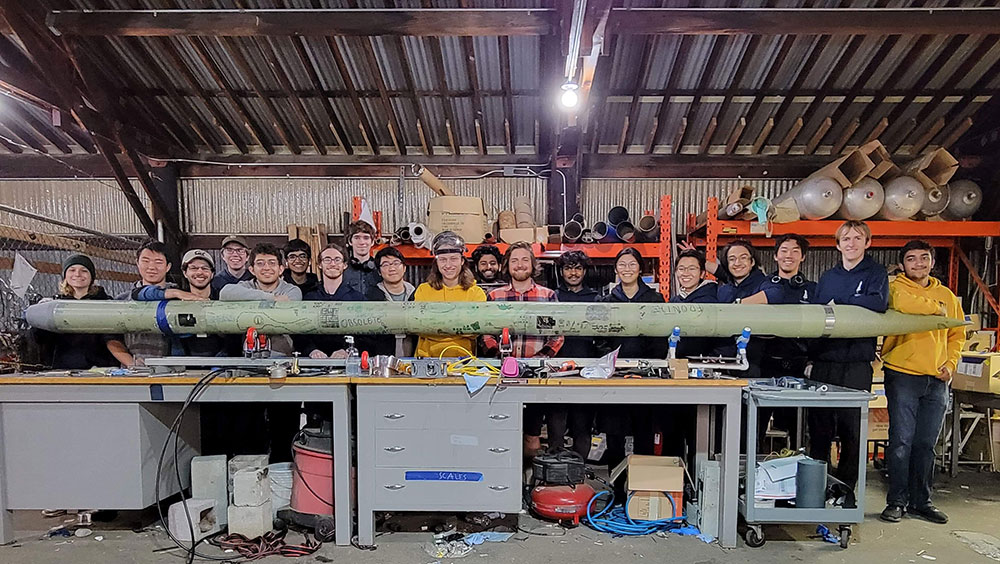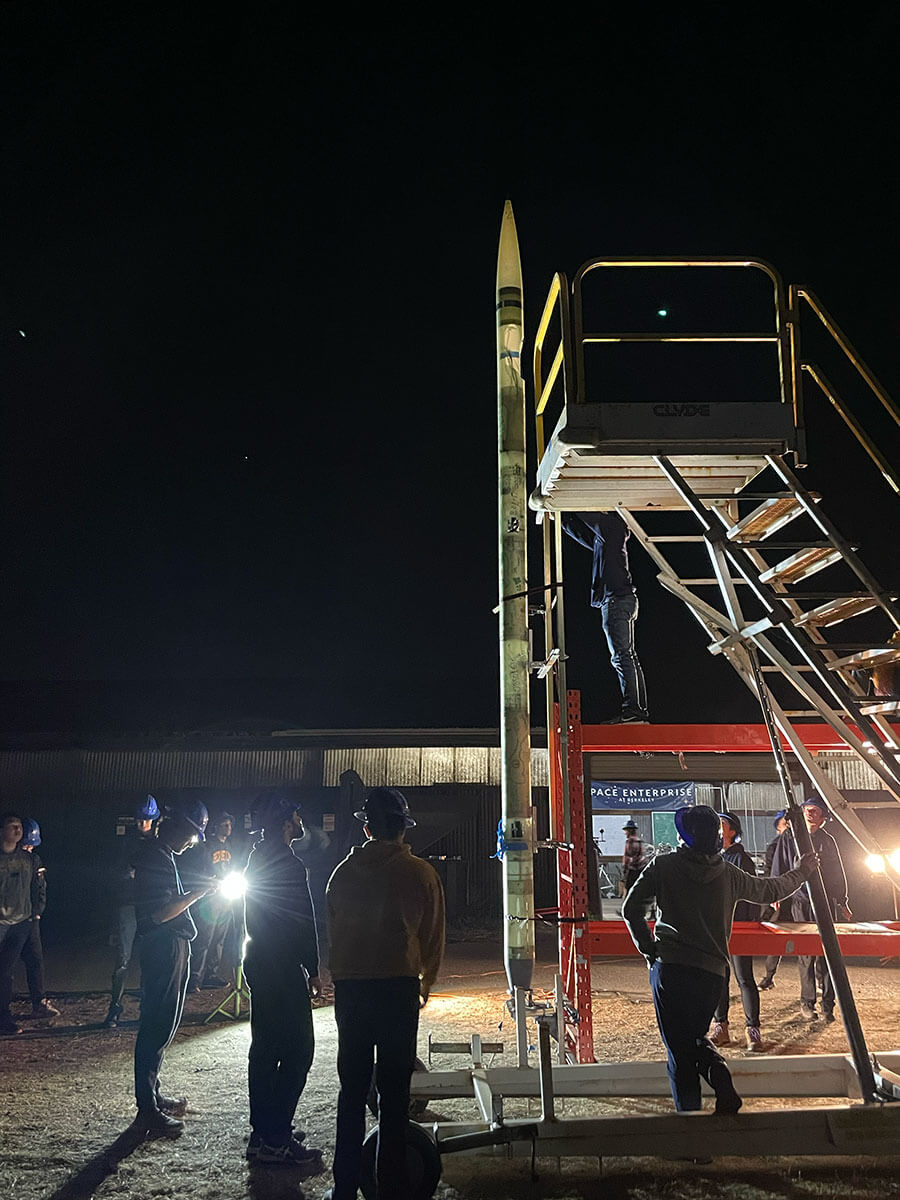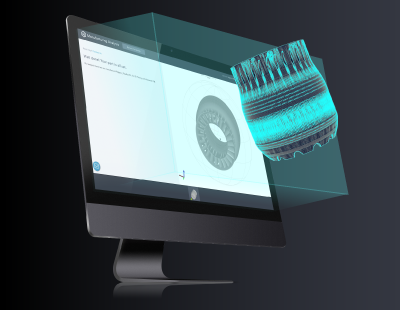Space Enterprise Berkeley Rocket to Reach Record Heights with 3D-printed Parts from Protolabs

The Space Enterprise Berkeley (SEB) team is just days away from launching their first ever liquid-fueled Eureka-1 (E-1) rocket. The Nov. 19 launch marks the culmination of the team’s thousands of hours of design, testing, and build work to reach the E-1's target 25-30,000-ft. altitude—nearly approaching the max average altitude for commercial aircraft flights. We were excited to partner with them, manufacturing 3D-printed components made via selective laser sintering (SLS) for the rocket’s plenum and complex parachute system.

The Space Enterprise Berkeley (SEB) team posing with their in-progress labor of love, the E-1 rocket.
Shooting for the Moon
Since the student-run team first started in 2016, SEB has proven to be a force to be reckoned with in the college rocketry community. The team is comprised of 30-40 active members representing a handful of sub-teams including: avionics, structures, propulsion, manufacturing, simulation, treasury, E-reg, and low-altitude demonstrator. SEB successfully performed multiple hotfire tests of their LIGHTBULB engine, which is included in their latest rocket, E-1. The loftiest goal the team has their sights on? Increasing the accessibility of space flight and launching a rocket to surpass the Karman Line, which is the defined boundary between Earth and space located 100 km (approx. 327,360 ft.) above sea level.
We chatted with SEB’s Low Altitude Demonstrator Program Lead Asa Garner to learn about the program, the highly anticipated E-1 launch, and the role additive manufacturing played in the team’s involved rocketry process for E-1.
Engineering Eureka-1
The team’s latest goal serves as a steppingstone to the larger goal of achieving their first space-shot flight; the E-1 is the university’s first rocket with a liquid bi-propellant engine powered by liquid oxygen and liquid nitrogen. Previously, the team had only flown solid motor rockets, which typically contain cured fuel and oxidizer. The E-1's engine is uncharted territory and the stakes are high. “We just fully stacked Eureka-1 (E-1) and we’re getting ready for launch on the 19th. It’s incredible looking. It’s gargantuan in person; around 19.5 ft. tall from base to tip. It’s quite remarkable seeing it after having looked at it in CAD for so long, seeing it standing there in front of us,” Garner said.

Many of the parachute and outer plenum components were 3D-printed via SLS with PA12 40% Glass-filled; a stiff material that offers long term wear resistance. “Both of the critical main parachute bulk heads were entirely 3D-printed and we’re using thermoplastic heat set inserts to fasten them to our primarily fiberglass airframe. It’s been really nice because basically, it’s just a lot faster to iterate on them then it would be if we were making them out of aluminum on a CNC machine or something of that matter and we didn’t have to make any compromises on the design. It’s been very convenient to utilize Protolabs printed parts on the rocket.”

Behind-the-scenes of one of the SEB team’s nighttime hot fire tests to ignite the rocket’s engine and gauge performance.
At-a-Glance: E-1 Rocket
- 19 ft. tall, 7.7 in. diameter
- 120 lbs. fully fueled
- Goal 25-30,000 ft. altitude
- Engine: 700 lb./force
- Propellants: liquid oxygen and liquid nitrogen
- Pressure-fed (two fuel tanks pressurized by a third nitrogen tank)
"It’s been really nice because basically, it’s just a lot faster to iterate on them then it would be if we were making them out of aluminum on a CNC machine or something of that matter and we didn’t have to make any compromises on the design. It’s been very convenient to utilize Protolabs printed parts on the rocket.”
Lightweighting and Lattice Design in Aerospace
The team was able to 3D print organic geometries including lattice patterns to lightweight the part while retaining a similar strength-to-weight ratio. “It’s the way in which they’re made. We utilized a lot of nTopology software for lattice generation on the part as well as very accurate finite element analysis. And we wouldn’t be able to produce that with really any other tech,” explained Garner.
“Designing with lattices and utilizing additive manufacturing allows you to have this very flexible design space that you can parameterize and quickly edit and change according to your constraints…We have a significant section of the bulkhead, essentially the volume in the part that is the lattice space. According to variables that we can change, we can move in our simulation where the pressure comes from, where we’re putting in the bolts, and have that lattice automatically regenerate.”

A few of the E-1 rocket parachute and plenum printed components Protolabs made via selective laser sintering (SLS).
From E-1 to E-Reg
Another exciting process the team has in the works, separate from and not included within, E-1 is developing and refining their proportional integral derivative (PID)-controlled electronic pressure regulator (E-reg) system. SEB is one of the only known university teams in the world to implement the technology, which replaces mechanical regulators allowing for more precise control of the rocket tank pressures and improves overall engine performance. This new technology is expected to help future, post E-1 rockets to higher altitudes. Check out the gorgeous desert hotfire test on the team’s Instagram account.
“The way that we control the rate at which the nitrogen goes into the tanks currently is through dome regulators. They’re mechanical, they’re bulky, and they take a long time to characterize. They’re pretty funky to work with at times. E-reg replaces those chunky mechanical dome regulators with an actively controlled PID loop actuation system. So, we get a lot less pressure drop through them and just a higher total pressure in the chamber, leading to a way better burn. It’s kind of a big step and every other team that we’re aware of that’s successfully implemented this has been using mostly off-the-shelf hardware. We made it entirely in-house, including all the hardware and all the control loops,” explained Garner.
No matter the outcome of the upcoming E-1 launch, we congratulate the SEB team for their dedication and hard work throughout this season. We’re happy to have been a small part of this year’s build and we’re rooting for you! Read more about the SEB rocketry team.

If you have any issues getting your guide, click here to download.


Need custom 3D-printed parts? Upload your CAD file for an instant online quote.
Get Printed Parts








